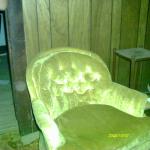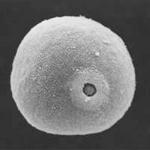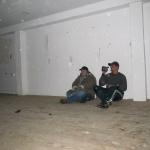
Click here to add text.
What are Orbs & How Do You ID Them?
Ahhh, the infamous orb. This strange ball is the most widely captured phenomenon by amateur ghost hunters and experienced paranormal investigators. However, when it comes to analyzing these photos there tends to be a split of opinion on this subject.
Most experienced paranormal investigators will usually rule most of these photos out and not include them in their
evidence. I would like to emphasize that I said, “most photos”… not all photos. Some orbs are paranormal and unexplainable. However, those orbs usually meet certain criteria and are unusual in appearance. To truly understand the orb phenomenon we need to take a look at the widely accepted “ghost theories” and examine the “orb” a little closer.
It is widely believed and accepted that once a person dies their spirit leaves their body. Once the spirit leaves the body it either travels to Heaven, stays on earth, or comes back to earth to visit. It is theorized that spirits are actually energy and they often travel in the form of a ball of energy or ball of light….hence the “orb.”
It is thought that the balls of light travel so fast that we cannot see them with our own eyes. However, it is believed that the ball of energy can be captured in photos.
This is where things get tricky. It is true that strange balls of light are captured in photos. They are captured in different places during the day and night. These balls of light are different colors and sometimes appear to be glowing. But are these phenomena captured on film actually ghost, spirits, or angels?
A good paranormal investigator must look at all possibilities before calling an anomaly captured in a photo “paranormal evidence.” What else could these strange balls of light be and how can you tell the difference between natural occurrences and something that is actually paranormal or unexplained?
To answer this question we must first examine what these
balls of light could be. Dust, pollen, moisture, camera distance from these natural elements can all cause “orbs” to show up in photos. These are natural occurrences and there is nothing paranormal about a speck of dust. Let’s take a look at each of these elements up close.
DUST
You need to use common sense when dealing with dust particles in your photos. Were you just walking through the area or is someone else walking above the area where the picture was taken? If anyone has dusted their home then you know dust is everywhere and can easily be stirred up. If you have captured a photo that seems to be full of “orbs” you have probably captured dust. Some dust particles are brighter than others because they are closer to the camera lens when the picture was taken. Sometimes these “orbs” will lack color, appear brown, and are usually transparent
Pollen
This is a picture of specifically grass pollen. Grass pollen would be the most common pollen and would explain how it might be seen 365 days a year in photos. Notice the dark center of the particle. We often see “orbs” that look like this. They have a darker center and are more transparent.
Humidity/Moisture
Taking pictures outside during the day or night can make you susceptible to natural interferences. 3P rarely ghost hunts in grave yards or outside. There are too many elements that interfere with the evidence. However, there are natural elements that interfere with our evidence inside as well. Areas that are high in moisture or humidity will often give us a false evidence in the form of “orbs.” Moisture appears as bright balls of light because the water particle will reflect the flash from the camera. If you are investigating you should take note of what the humidity or moisture content of the area is before you classify a photo as evidence. Much like pollen and dust…if you have captured a room full of “orbs” it probably isn’t paranormal.
These are just a few of the natural occurring elements that may explain why you have these “orbs” in your photos. So… is 3P saying that all orbs are natural occurrences? We are not saying that at all. In fact that could not be further from the truth. With that being said we want to share our criteria for classifying an orb as paranormal.
NOTE * You need to remember that ghost hunting is not an exact science. We all work from theories and other research. What may be applicable in one instance may not work in another. There will be instances when phenomenon will be captured & it may not fit within our established criteria. The criteria checklist is only a guide for some of the most common occurrences.
Criteria Checklist:
- There are very few, if only one, orb/orbs in the photo.
- Moisture is low, windows are closed, and no movement could have stirred up dust.
- The orb can be seen reflecting in a class surface such as a TV, picture, class, window, etc…
- The orb has a unique shape.
- The orb is a different color other than bright white.
- Compare to other photos taken at the same time.
- There is no other possible explanation for the light anomaly to have occurred... such as a
- reflection from another source of light or reflection from the flash,
- The orb seems to be giving off it’s own light source and appears to not be transparent. (this can be tricky, because
when things are closer to the camera lens they appear to be more solid and brighter)
So now you have went through the criteria checklist and you have determined that what you have captured in your picture is an orb. Well…..what exactly does that mean? You captured something paranormal. So what? The definition of paranormal is something that designates experiences that are outside of the range of a normal, explainable experiences.
Have you captured a picture of a ghost? I don’t think so. You have captured something that you cannot explain. You have ruled out any natural occurrence that is known to man at this point and time and you cannot say for sure what “it” is. In some instances you might classify the orb phenomena as it’s own paranormal anomaly…outside of and separate from “ghost” all together.
I hate to admit it, but we are all guessing here kiddies! That is why we continue to look for more answers.
Happy hunting!


